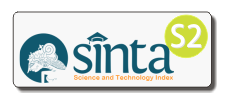The Composition and Distribution of Household Wealth in Indonesia
Abstract
As a developing country, Indonesia still suffers from inequality among classes. This inequality is reflected from unequal distribution in wealth owned by households. Thus, the descriptive information related to household wealth is an initial attempt to examine the composition and distribution of household wealth in Indonesia. This is a descriptive research, employing information from Indonesian Family Life Survey (IFLS) wave 5. The focus in this research is mean, median, and distribution of wealth components seen from age groups and quantiles perspectives. The results of this research are: (1) household wealth in Indonesia is unequally distributed. Even though the mean of total wealth is 147 million rupiah, but the middle household (median) receive 56.8 million rupiah. (2) The 10th decile is the wealthiest social class, with wealth more than 500 times bigger than the 1st decile. (3) From age group perspective, the 30-44 years old age group is the wealthiest. (4) There is the existence of negative net wealth. The negative net wealth required further action that cannot easily approached by the descriptive method.
Keywords: household wealth, wealth distribution, negative wealth
JEL Classification: D31; E01; E21; R20
Full Text:
PDFReferences
Bowles, S., & Gintis, H. (2002). The inheritance of inequality. Journal of Economic Perspectives, 16(3), 3-30.
Bloxham, P., & Betts, T. (2009). Measures of household wealth for Australia. Australian Economic Review, 42(2), 217-231.
Di Zhu, X. (2001). The role of housing as a component of household wealth: Joint Center for Housing Studies, Graduate School of Design [and] John F. Kennedy School of Government, Harvard University.
Gibson, L. (2017). Towards a More Equal Indonesia: How the government can take action to close the gap between the richest and the rest. Oxford: Oxfam.
Marks, G. N., Headey, B., & Wooden, M. (2005). Household wealth in Australia: Its components, distribution and correlates. Journal of Sociology, 41(1), 47-68.
McKenzie, D. J. (2005). Measuring inequality with asset indicators. Journal of Population Economics, 18(2), 229-260.
O'Dwyer, L. A. (2001). The impact of housing inheritance on the distribution of wealth in Australia. Australian Journal of Political Science, 36(1), 83-100.
Oliver, M. L., & Shapiro, T. M. (1990). Wealth of a Nation. American Journal of Economics and Sociology, 49(2), 129-151.
Piketty, T. (2014). Capital in the 21st Century. Cambridge: Harvard University Press.
RAND (2014). Indonesian Family Life Survey. Accessed from https://www.rand.org/labor/FLS/IFLS.html
Scholz, J. K. (2003). Wealth inequality and the wealth of cohorts. University of Wisconsin. Mimeo.
Shennan, S. (2011). Property and wealth inequality as cultural niche construction. Philos Trans R Soc Lond Biol Sci, 366(1566), 918-926
Soseco, T. (2010). Perkiraan Ketimpangan Distribusi Pendapatan di Indonesia dengan Indeks Theil. Jurnal Ekonomi dan Studi Pembangunan, 2(2), 110-116.
Soseco, T., Sumanto, A., Soesilo, Y.H., Wafa, A.A., Istiqomah, N., Yunikawati, N.A., Puspasari, E. (2017). Income Inequality and Access of Housing. International Journal of Economic Research, 14(6), 52-62.
Strauss, J., Witoelar, F., & Sikoki, B. (2016). The Fifth Wave of the Indonesia Family Life Survey: Overview and Field Report. Volume 1
Stubhaug, M. E. (2017). Housing and Wealth Inequality. University of Oslo, Oslo.
Taleb, N. N. (2008). Fooled by Randomness: The Hidden Role of Chance in Life and in the Markets, 2005. Updated edition (October 14, 2008) Random House–ISBN-13, 978-1400067930.
Tilly, C. (2006). The economic environment of housing: Income inequality and insecurity. In R. Bratt, M. Stone & C. Hartman (Eds.), A Right to Housing: Foundation for a New Social Agenda (pp. 269–315). Philadelphia, PA: Temple University Press.
World Bank. (2016). Indonesia's rising divide. Washington, D.C.: World Bank Group. Retrieved from http://documents.worldbank.org/curated/en/ 267671467991932516/Indonesias-rising-divide
Refbacks
- There are currently no refbacks.
ISSN (Print) 2086-1575 ISSN (Online) 2502-7115

This work is licensed under a Creative Commons Attribution-NoDerivatives 4.0 International License.






